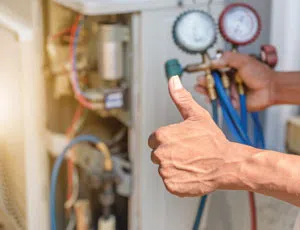If all goes as planned, Oct. 25, 2011, will be a milestone for our industry and its participation in the federal rulemaking process for energy-efficiency standards. Assuming no substantial objections, on that date the Direct Final Rule issued by the Dept. of Energy (DOE) setting regional standards for residential furnaces, heat pumps, and central air conditioners will be final, starting the clock ticking toward the first implementation deadline of May 1, 2013, for non-weatherized furnaces.
The importance of the early, proactive involvement of manufacturers in this particular rulemaking process cannot be overstated. Working with energy-efficiency advocates, AHRI and our member companies achieved a consensus that provides predictability for manufacturers, energy savings and environmental benefits for the nation, and cost savings for consumers.
In 2007, Congress gave DOE the authority to explore setting energy-efficiency standards for federally covered products on a regional basis — authority that had never before been granted. As DOE began the process, it became apparent that the agency was planning on using this new
authority. Historically, our industry has been opposed to regional standards, preferring a single national standard for covered products. But we recognized that because the regional approach was inevitable, it was important to get involved early and secure the best deal possible. Avoiding reality and doing nothing to prepare would have been shirking our responsibility to our members and associates.
In the months leading up to the rulemaking, some in California suggested that their state alone could justify as many as 16 regions! Sensing the possibility — even probability — that common sense might not prevail, AHRI began looking at possible regional configurations, and also the efficiency levels themselves to prepare for negotiations. Being at the table early to have a say protected the interests of the entire industry — manufacturers, contractors, and distributors (not to mention the public).
In 2008, AHRI and several member companies began negotiating with prominent energy-efficiency advocacy groups, such as the American Council for an Energy Efficient Economy, the Alliance to Save Energy, the Natural Resources Defense Council, and the California Energy Commission, to see if we could reach an agreement that could be presented to DOE for consideration. It took about a year, but an agreement was reached in October 2009 that proposed three regions based on the number of heating degree days, and suggested suitable efficiency levels within those regions for equipment. The agreed-upon standards preserve the same level for air conditioners in the north as currently exists (13 SEER) and for furnaces in the south (80 AFUE). For heat pumps, the agreement establishes one, national level, at 14 SEER/8.2 HSPF for splits and 14 SEER/8.0 HSPF for packaged systems. Anyone who is familiar with the regulatory process knows that reaching an agreement that keeps the current levels for specific products in half the country is a major victory.
When fully implemented, the new standards will save the nation between 3.2 and 4.2 quadrillion Btu (quads) of cumulative primary energy between 2013 and 2045. That’s enough to provide energy to 18 million households for a year. These energy savings will result in cumulative greenhouse gas-emission-reductions between 105 and 134 million metric tons of CO2 during the same period of time — an amount equal to that produced by approximately 20 million cars every year. Finally, energy consumers will save about $15 billion in 2009 dollars.
With one, national standard, as we have now, manufacturers are responsible for ensuring that no equipment below the federal minimum-efficiency level is sold. With regional standards, that responsibility shifts to the contractors and, to a lesser extent, the distributors. We are
working closely with those two groups on strategies to suggest to DOE to ensure maximum compliance.
Some ideas include reorganizing by region data in the AHRI Directory of Certified Product Performance, product labeling depicting regions in which the product could be sold, requiring compliance acknowledgement in credit-line agreements, requiring consumeracknowledgement
statements, and tracking serial numbers from point of manufacture to point of installation.
Regardless of what enforcement methods are ultimately promulgated by DOE, manufacturers are committed to doing all they can to ensure maximum compliance


